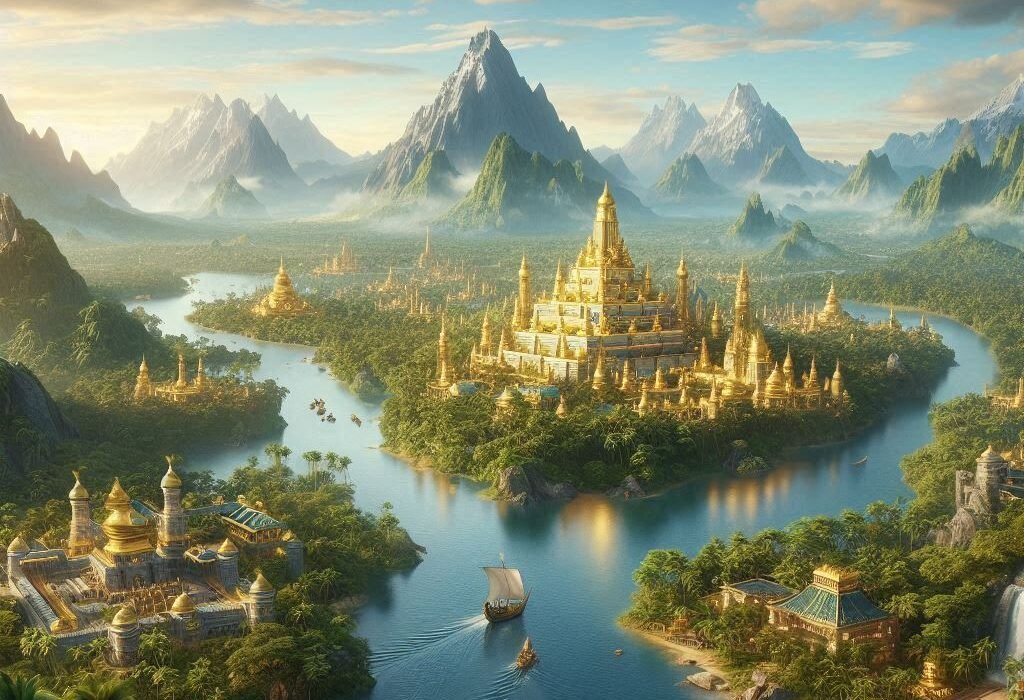For centuries, the Great Wall of China has loomed large—not only across the landscapes of northern China but also in the imagination of the world. Described variously as a dragon’s spine across the mountains, the ultimate fortification of ancient might, and even the only man-made object visible from space (a myth, but a persistent one), the Wall is not just a marvel of engineering. It is a living chronicle of ambition, warfare, empire, and identity.
Stretching across more than 21,000 kilometers (13,000 miles) in its entirety—including all its branches and rebuilds—the Great Wall is often described as one of the greatest construction projects in human history. But it is more than just stone and earth. It is a layered tapestry of dynasties, dreams, defense, and defiance. To understand the Great Wall is to follow the footsteps of emperors, peasants, generals, and laborers across thousands of years.
This is not just a story of bricks and battlements; it is a story of an idea that shaped a civilization.
The Origins: From Tribal Borders to Imperial Boundaries
Before there was the Great Wall, there were many walls—built by disparate kingdoms during the Warring States period (475–221 BCE). At the time, China was not yet unified. Instead, it consisted of rival states like Qi, Yan, Zhao, and Qin, all trying to protect their territories from each other and from nomadic tribes to the north.
These early walls were local affairs—rudimentary ramparts made of tamped earth, constructed by warlords rather than emperors. They were built not to encircle the nation but to defend against raids, define borders, and sometimes even trap enemies.
Then came Qin Shi Huang.
In 221 BCE, Qin Shi Huang, the formidable first emperor of a unified China, took power. Determined to consolidate his newly formed empire and shield it from external threats, particularly the Xiongnu nomads of the steppes, he ordered the connection of several of these regional walls. This was not a wall to mark territory—it was a statement of imperial permanence.
The wall he initiated was no serene structure. It was built through sweat and suffering. Hundreds of thousands of conscripted soldiers, peasants, and prisoners labored in brutal conditions. Many died and were buried within the wall itself, giving rise to the chilling nickname: “The Longest Cemetery on Earth.”
Han, Tang, and Beyond: A Wall in Flux
While the Qin Dynasty’s wall was groundbreaking, it was only the beginning. Subsequent dynasties would add, remove, rebuild, or even ignore the wall, depending on their military strategy and priorities.
The Han Dynasty (206 BCE–220 CE) extended the wall westward to protect the emerging Silk Road—a trading artery that would become one of the most important in global history. Under Emperor Wu of Han, new sections were built deep into the deserts of Gansu and Xinjiang, pushing the frontier far beyond its original bounds.
Later, during the Tang Dynasty (618–907 CE), China enjoyed a golden age of relative peace and prosperity. The Tang emperors favored diplomacy and trade over isolation and rarely invested in the wall. In fact, some stretches were neglected and crumbled into obscurity.
The wall, it seemed, was not a constant but a reflection of the state’s confidence and philosophy. When strong, China expanded outward. When threatened, it retreated behind stone.
The Ming Dynasty’s Monumental Effort
It was the Ming Dynasty (1368–1644), however, that gave us the Wall as we recognize it today—fortified with brick, stone, and towers that seem to defy gravity as they snake over mountains and valleys.
The Ming emperors, especially after a humiliating defeat by the Mongols in the 15th century, became obsessed with border security. They built thousands of kilometers of wall, watchtowers every few hundred meters, and intricate passes such as the famous Juyongguan and Shanhaiguan—fortresses that could rival any European castle.
This was not just a wall; it was a military machine. Garrisons were stationed within its bastions. Beacons were lit across the towers to send messages—an ancient form of optical telegraphy. Soldiers were rotated, drilled, and resupplied through an internal network of roads and forts.
In Ming times, the Great Wall became a symbol of resilience, an assertion that the empire would no longer be vulnerable to northern invasions. But ironically, the wall could not save the Ming. In 1644, it was breached not by brute force but by betrayal. A Ming general opened the gates at Shanhaiguan to let the Manchu invaders through, leading to the fall of the dynasty and the rise of the Qing.
Mythology and Folklore: The Wall of Ghosts and Legends
Alongside its physical grandeur, the Wall is wrapped in layers of myth. One of the most enduring stories is that of Meng Jiangnü, a woman whose husband was conscripted to build the Wall during the Qin Dynasty. When he died from the harsh labor, Meng traveled to the Wall with her husband’s remains and wept so bitterly that a section of the Wall collapsed, revealing his bones.
This legend, told in countless plays and poems, is more than a tale of grief. It is a veiled critique of tyranny and the cost of empire—one that resonated through generations of Chinese peasants.
Then there are the tales of dragons—beasts that supposedly guided the construction of the Wall, carving its serpentine path across the terrain. Even modern visitors sometimes speak of a mystical presence when walking the Wall’s heights, especially at dusk, when shadows stretch across the mountains like the back of a sleeping dragon.
Was It Visible from Space? The Persistent Myth
No article on the Great Wall can avoid the popular claim that it is “the only man-made structure visible from space.” It’s a captivating idea—but also incorrect.
Astronauts have confirmed that while the Wall is long, it is too narrow and blends too well with the surrounding landscape to be seen with the unaided eye from orbit. Cities, airports, and highways are far more visible. Yet the myth persists, perhaps because it symbolizes the awe we feel when contemplating the Wall’s scale.
The truth is no less astonishing: whether visible from space or not, the Wall remains a monument to human tenacity and vision.
The Wall Today: Preservation, Tourism, and Transformation
In the modern era, the Great Wall has become a powerful symbol of Chinese national pride and cultural continuity. It draws millions of tourists each year to restored sections like Badaling and Mutianyu, near Beijing, where the Wall is at its most dramatic.
But these sections are just a fraction of the total. Vast stretches of the Wall are in disrepair, crumbling under the weight of time, erosion, and neglect. Some have been damaged by farming, looting, or even stolen bricks reused in local construction. Conservationists race against time to preserve what’s left, balancing historical integrity with the demands of modern tourism.
Yet in recent years, there’s been a revival of interest. Digital mapping, drone surveys, and even augmented reality are being used to document and reconstruct lost parts of the Wall. In some provinces, volunteers patrol the Wall, removing trash and reporting damage. The Wall, it seems, is no longer just a relic—it is a living project.
A Wall That Binds, and Divides
The Great Wall is a paradox. It was built to divide—China from “the barbarians.” Yet over time, it has come to represent unity. It is a thread that stitches together the story of dynasties, cultures, and generations.
For some, it represents imperial paranoia. For others, it is a triumph of architecture. For the Chinese people, it is an inheritance of blood, toil, and pride. For historians, it is a lens through which to examine everything from military logistics to philosophy.
It divides and connects. It imprisons and protects. It isolates and inspires.
The Great Wall as a Metaphor
Ultimately, the Wall is more than a structure—it is an idea. It is the idea that human ambition can move mountains, quite literally. It is the idea that identity can be defended by stones, even when those stones are worn thin by wind and rain. It is the idea that history is not just written in books, but built in landscapes.
Whether you walk its steps under the scorching sun or gaze at its silhouette in a winter fog, the Great Wall speaks across time. It tells you that the people who built it, who guarded it, who died beneath it, and who mourned beside it—all lived lives of meaning. Their echoes are still there, in the brick, the wind, and the soil.
The Wall is not just part of Chinese history. It is part of human history.





